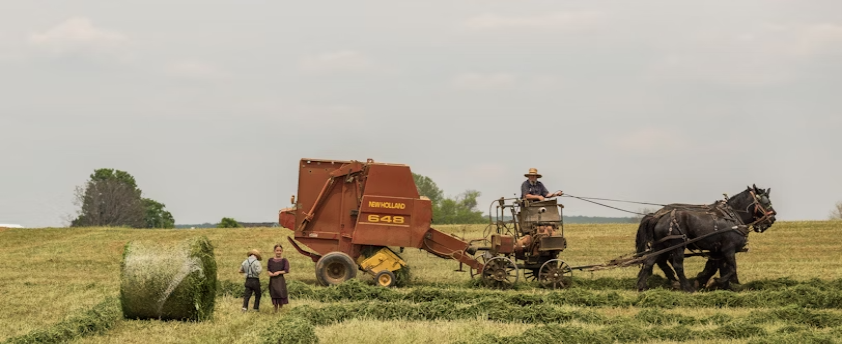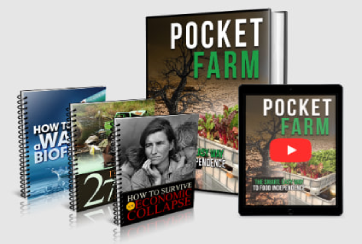Table of Contents
Introduction to Pocket Farm
In an era where food security is becoming increasingly critical, the concept of food independence has gained significant traction. The Pocket Farm system emerges as a revolutionary solution for individuals and families seeking to achieve self-sufficiency in their food production. This innovative approach addresses the growing concerns of food scarcity, supply chain disruptions, and the escalating costs associated with conventional food sourcing.
The Pocket Farm is designed to empower users by providing a practical and efficient method to cultivate their own food. This system leverages advanced agricultural techniques and cutting-edge technology to create a compact, user-friendly farming environment. It is tailored to meet the needs of both urban and rural dwellers, making it accessible to a wide audience regardless of space constraints or prior farming experience.
One of the key benefits of the Pocket Farm system is its ability to produce a consistent and reliable food supply. By enabling users to grow a variety of crops year-round, it reduces dependence on external food sources and minimizes the vulnerability associated with market fluctuations and environmental challenges. Furthermore, this system promotes sustainable practices by utilizing eco-friendly materials and methods, thereby contributing to environmental conservation.
The importance of food independence cannot be overstated in today’s world. As global populations continue to rise and climate change impacts agricultural productivity, the need for resilient and self-sustaining food systems becomes paramount. The Pocket Farm addresses these pressing issues by offering a scalable solution that can adapt to various living conditions and dietary needs.
In essence, the Pocket Farm represents a significant leap towards achieving food independence. It empowers individuals to take control of their food sources, ensuring a healthier, more secure, and sustainable future. This innovative system not only fosters self-reliance but also aligns with broader efforts to create a more resilient and equitable food system for all.

Why Choose Pocket Farm?
The Pocket Farm system offers a unique and innovative approach to achieving food independence, setting itself apart from traditional methods of food production. One of its primary advantages is its simplicity. Unlike extensive farming or gardening setups, the Pocket Farm is designed to be user-friendly, requiring minimal expertise or prior experience. This ease of use ensures that even families with no agricultural background can successfully cultivate their own fresh produce.
Another notable benefit is the quick setup time. The Pocket Farm system is engineered for rapid assembly, allowing families to start growing their own food in a matter of hours rather than days or weeks. This is particularly advantageous for those who want to transition swiftly towards self-sufficiency without the lengthy preparation phase that other systems might demand.
Maintenance is another area where the Pocket Farm excels. Traditional farming methods often require significant ongoing effort, including weeding, pest control, and soil management. In contrast, the Pocket Farm system is designed for ease of maintenance, incorporating features that reduce the need for constant attention. This makes it an ideal solution for busy families who desire the benefits of home-grown produce without the burden of intensive labor.
Furthermore, the Pocket Farm is an excellent option for families looking to ensure their health, safety, and self-sufficiency. By growing their own food, families can have greater control over the quality and safety of what they consume. This system supports organic farming practices, allowing users to avoid harmful pesticides and genetically modified organisms. Additionally, the ability to produce food locally reduces dependence on external supply chains, enhancing food security and resilience, particularly in times of crisis.
In essence, the Pocket Farm system stands out as a smart, efficient, and accessible solution for food independence. Its combination of simplicity, quick setup, and low maintenance makes it a recommended choice for families aiming to secure a healthier and more self-reliant lifestyle.
Setting Up Your Pocket Farm
Embarking on the journey to food independence with a Pocket Farm system is a straightforward and rewarding process. To begin, gather all necessary materials. The core components include a raised garden bed or container, quality soil or a soilless growing medium, seeds or seedlings, and essential gardening tools such as a trowel, watering can, and plant markers. Depending on the complexity of your setup, you may also require a trellis for climbing plants, a compost bin for organic waste, and a simple drip irrigation system to ensure efficient watering.
The first step in setting up your Pocket Farm involves selecting an appropriate space. Ideally, choose an area that receives ample sunlight, as most crops thrive with at least six hours of direct sunlight daily. If space is limited, consider vertical gardening options or compact, modular systems that can fit on balconies or patios. For indoor setups, grow lights can supplement natural sunlight, ensuring your plants receive adequate light throughout the day.
Once you’ve identified a suitable location, prepare your growing medium. Fill your raised bed or container with a mix of high-quality soil and organic compost, which provides essential nutrients for plant growth. If using a soilless medium, ensure it is well-aerated and retains moisture effectively. Plant your seeds or seedlings according to the spacing recommendations provided on seed packets or plant labels, taking care to avoid overcrowding, which can impede growth and increase the risk of disease.
Water your Pocket Farm regularly, keeping the soil consistently moist but not waterlogged. Most plants prefer a deep watering schedule, allowing water to penetrate the root zone thoroughly. Mulching around plants can help retain moisture and reduce the frequency of watering. Additionally, monitor your plants for signs of pests and diseases, addressing any issues promptly to maintain a healthy, productive garden.
The Pocket Farm system is designed to be user-friendly, making it accessible for individuals with varying levels of gardening experience. By following these steps and maintaining a consistent care routine, you can enjoy the benefits of homegrown produce with minimal effort, fostering a deeper connection to your food and a more sustainable lifestyle.
Maintaining Your Pocket Farm
Effective maintenance is critical to ensure the success and sustainability of your Pocket Farm. Regular attention to key aspects such as watering schedules, pest control, and seasonal adjustments will help you achieve a continuous and bountiful harvest. By adhering to best practices, you can optimize productivity and enjoy the benefits of food independence.
Watering schedules are fundamental to the health of your Pocket Farm. Different crops have varying water requirements, so it’s important to tailor your approach accordingly. Establish a consistent watering routine, preferably in the early morning or late afternoon, to minimize evaporation and ensure that plants receive adequate hydration. Consider using drip irrigation systems or soaker hoses to deliver water directly to the roots, reducing waste and promoting efficient water use.
Pest control is another essential aspect of maintenance. Common pests can significantly impact the health of your crops if left unmanaged. Begin with preventive measures such as crop rotation, which can disrupt the life cycles of pests. Additionally, employing natural predators like ladybugs or introducing companion planting can serve as organic pest control methods. For more severe infestations, consider using eco-friendly pesticides that won’t harm beneficial insects or the environment.
Seasonal adjustments play a vital role in maintaining your Pocket Farm throughout the year. Be mindful of the changing weather patterns and adjust your planting schedules accordingly. In colder months, utilize protective measures such as frost covers or greenhouses to shield plants from harsh conditions. Conversely, during hotter periods, ensure that your crops receive adequate shading and hydration to prevent heat stress.
Consistent monitoring and timely interventions are key to the successful maintenance of your Pocket Farm. Regularly inspect your plants for signs of stress, disease, or nutrient deficiencies, and address these issues promptly. Implementing organic fertilizers, mulching, and proper pruning techniques can further enhance plant health and productivity.
By dedicating time and effort to the upkeep of your Pocket Farm, you can foster a thriving and resilient food production system. These maintenance practices will not only ensure a continuous harvest but also contribute to your journey toward food independence.
Success Stories and Testimonials
Real-life stories from individuals and families who have integrated the Pocket Farm system into their daily lives provide invaluable insights into the transformative power of this innovative approach to food production. These success stories showcase the tangible benefits and changes that users have experienced, emphasizing the practical applications and long-term advantages of adopting such a system.
One family from Oregon, for instance, reported that their journey towards food independence began with the installation of the Pocket Farm system in their backyard. Within just a few months, they noticed significant reductions in their grocery bills as they started harvesting fresh vegetables and herbs straight from their garden. The family highlighted the ease of use and maintenance, noting that even their children enjoyed participating in the gardening process. This hands-on experience not only provided them with nutritious, home-grown produce but also fostered a deeper appreciation and understanding of sustainable living.
Similarly, an individual from Texas shared how the Pocket Farm system revolutionized their urban lifestyle. Living in a city apartment with limited space, they were initially skeptical about the feasibility of growing their own food. However, the compact and efficient design of the Pocket Farm allowed them to cultivate a variety of greens and tomatoes on their small balcony. They remarked on the sense of accomplishment and self-reliance that came from harvesting their own produce, and how it positively impacted their overall well-being and diet.
Another compelling testimonial comes from a community garden project in New York. By incorporating multiple Pocket Farm units, the project was able to significantly boost its output, providing fresh produce to local residents and food banks. Organizers praised the system for its scalability and adaptability, which enabled them to meet the growing demand for locally sourced, organic food. The success of this initiative underscored the potential of the Pocket Farm system to contribute to broader social and environmental goals.
These testimonials collectively illustrate the diverse ways in which the Pocket Farm system has been successfully implemented across different settings and lifestyles. Whether in rural areas, urban apartments, or community projects, the impact of achieving food independence through this system is profound. The common thread in these stories is the empowerment that comes from taking control of one’s food sources, leading to healthier, more sustainable living practices.
Conclusion and Call to Action
The Pocket Farm system offers a transformative approach to achieving food independence, combining smart technology with ease of use. Throughout this blog post, we have explored the key advantages of the Pocket Farm, including its ability to provide fresh, organic produce year-round, minimize the environmental impact of traditional farming, and reduce your reliance on external food sources. This innovative system is designed to fit into various lifestyles, making it accessible for urban dwellers and rural homeowners alike.
One of the standout features of the Pocket Farm is its user-friendly design, which allows even those with limited gardening experience to successfully grow their own food. The system’s automated components ensure optimal growing conditions, while its compact size makes it suitable for small spaces. By adopting the Pocket Farm, you are not only taking a step towards food independence but also contributing to a more sustainable future.
Getting started with your own Pocket Farm is straightforward. Begin by assessing the available space in your home, whether it is a balcony, a backyard, or a dedicated indoor area. Next, research the specific crops you wish to grow and understand their requirements. Pocket Farm systems come with detailed guides and customer support to assist you every step of the way. Additionally, numerous online communities and forums provide a wealth of information and shared experiences from fellow Pocket Farm users.
For those ready to embark on their journey towards food independence, consider visiting the official Pocket Farm website for more details on purchasing options, system specifications, and instructional materials. Embrace the convenience and efficiency of the Pocket Farm system to enjoy the benefits of fresh, home-grown produce. By integrating this smart, easy solution into your daily life, you can take control of your food supply and contribute positively to environmental sustainability.





